Stuck at home with nothing to do? Don’t worry – the DWCA has your back! We’ve just released Volume Four of Zerinza, which collects the entire Eleanor saga from the pages of Data Extract, along with new behind the scenes material. With articles, comics, stories and illustrations, this volume is a celebration of the power and originality of fan fiction in general as well as that of Eleanor and her supporting cast in particular. Eleanor Chaplette was devised by Craig Land and Dom Kelly for the Doctor Who Club of Australia’s flagship publication Data Extract and featured from issue 228 in 2015 to issue 245 in 2020. The book is available now in a beautiful hardcover edition from the club’s Lulu store here.
Author: Darran Jordan
DWCA Events Cancelled due to COVID-19
Due to the health emergency of the Coronavirus (COVID-19) global pandemic, the DWCA and its local groups have made the difficult decision to cancel upcoming events. As soon as it is possible to safely host events later in the year the DWCA will look to do so.
The Canberra local group reports that since ACT libraries are closed so no meetings are currently scheduled. The Central West group reports they have no venues so no meetings are currently scheduled. The Newcastle local group have cancelled their meetings but are currently investigating if online meetings are viable.
We wish all our members good health during this challenging period. As we are all stuck at home until the spread of the virus abates, the DWCA will be endeavoring to provide you with as much diverting Doctor Who related entertainment as possible. Please reach out through online means as much as possible to stay connected and support each other through these difficult times.

DWCA Founder Kerrie Dougherty Awarded OAM
Kerrie Dougherty, one of the original founders of the DWCA, has had a long and interesting career outside the club which has seen her curating science fiction exhibitions, running Dalek races, writing books, and even undertaking academic work in space archaeology! One of her published papers, a case study of volunteer rocket retrieval in Australia, appeared in a Cambridge Scholars Publishing book that also had a paper on representations of archaeology in Doctor Who. Plus, she even wrote content for the Doctor Who Visual Dictionary. In 2020 her many achievements were formally recognised in the Australia Day honours list, where she was awarded a Medal (OAM) of the Order of Australia in the General Division.
The DWCA would like to extend our congratulations to Kerrie, and to honour her have included below the interview with her that first ran back in 2016 in Data Extract 233. Thanks to Lauren Davis and Dallas Jones for conducting the interview. The image below is a portrait of Kerrie by Melbourne Based Oil Portrait artist Leo Flander.

You graduated from Sydney University with a degree in archaeology – how did you then end up working at the Powerhouse Museum?
Well, I actually went on to study archive administration, but I was always a space fanatic as well as a science fiction fan. And after I finished the archives course – this is before the Powerhouse Museum actually existed as the Powerhouse – the Museum of Applied Arts and Sciences was advertising for a registration assistant for four months. I knew they wanted somebody to catalogue Sydney Observatory, which had just been taken over, but it had then been closed down as a functioning observatory and given to the museum to develop into a museum of Australian Astronomy. When I went to the interview, I made a point about the fact that I knew about astronomy, as well as having the historical and the archival knowledge. And that got me my first job at the museum cataloguing Sydney Observatory. It was supposed to be for four months and I was there for exactly 31 and-a-half years! That wasn’t too bad for a four month job!
While you were there I understand you managed to host Dalek races. How did that come about?
In 1995 we took an exhibition that was actually originally developed in Perth, called Special Effects: The Secrets Behind the Screen. And there were a couple of things I wanted to do with this exhibition, one of which was to get genuine science-fiction props into it, because the exhibition had a lot of interactive material, but not a lot of artefact material that actually related to science-fiction film and that. And of course, I wanted to try and get some Doctor Who stuff into there. I talked to the people at BBC Worldwide and persuaded them to let us have their Dalek. We did a bit of a deal with them – they wanted to have the voice circuit on it repaired, so they said they’d loan it to us if we repaired the voice circuit. So that’s what we did! If you happened to see that exhibition back then, we actually had the Dalek displayed in a nice prominent position and on a circuit it would go off and go “Exterminate! Exterminate!” and that sort of thing.
One of the things that we also do in conjunction with special exhibitions is we develop public programs to go with them. So I thought it’d be really nice if we could get them to start doing Dalek races as part of the public programs. Through the club I got in touch with various people who had Daleks and were prepared to loan them to us, so we could run a series of Dalek races at different times across the life of the exhibition. That restarted the program of having Dalek races every so often, at the museum.
What sort of care did you have to take in handling the original props?
As you would with any museum artefact. We treat everything that comes into the museum, even if it’s only a film prop, as a valuable artefact in the same way you would treat a Fabergé egg. They are handled appropriately with gloved hands – you treat them as if they were really valuable artefacts. In terms of their social history context they are really valuable artefacts.
Is there a contrast between that and holding Dalek races?
Ah, but those Daleks are fan made, so they aren’t artefacts. The difference is, with the Dalek races, that those are fan made props, so they haven’t been used in the show. With the Dalek races, the people who built the Daleks usually brought their own, which is a different thing from the BBC or Lucasfilm or somebody else entrusting their materials to us to put on display.
Is there much of a difference between curating and policing a museum of historical artefacts and a museum of science-fiction?
Curating is a particular thing that you do – policing people is what the museum security people do! But when you design an exhibition, you design it so people don’t get the chance to damage the objects. You’ve got to allow people good visual access, but at the same time you can’t allow them to touch it. And you certainly can’t give them the opportunity to steal it. One of the things that we always tried to do at the Powerhouse was to have as much on open display as we could. But then that requires you to design the exhibition so that people can’t touch the objects. With the Dalek, for example, we had that on an open display, but it was set at the back of a plinth with about a metre in front of it, so you couldn’t reach over and get to it over the barrier.
It was the BBC’s decision that people weren’t to photograph it, though. Generally speaking, you don’t allow a lot of photography, because even though one person’s flash isn’t doing a lot of damage, a million people’s flashes are going to fade textile paper. A lot of delicate materials will be faded by ultraviolet light. So you simply can’t have several hundred-thousand or several million people over time taking flash photographs of an object.
About the BBC Dalek… just some background on why they were protective. When it was brought out here, it was brought out here for the Royal Easter Show. They also had Doctor Who showbags… but then at the end it cost too much money to send the Dalek back! So they kept the Dalek. But then they wanted to use it, so they lent it to a video store in Manly. When they got it back, word came down that it was never to be lent out again because it nearly got destroyed.
When it came to us, the electronics weren’t working and they wanted our technical people to fix the electronics for it. But in fact, we also believe that in the Powerhouse collection, we now have the original ring modulator that was used to create the first Dalek voice. Because Tristram Carey, who did some of the early incidental music for Doctor Who, came out to Australia in the late seventies to do some set-up of electronic music instruments at the University of Melbourne. He then came back to Australia and decided to stay permanently. When he passed away, his collection – all the contents of his studio and everything – was donated to the Powerhouse. And among that we found a ring modulator, and the notes that were with it suggested that it was the one they originally used to make the first Dalek voices back in the Radiophonic Workshop!
You’ve also written some Star Wars books and some Doctor Who books – can you tell us about your books?
When we did the first Star Wars exhibition at the Powerhouse Museum (Star Wars: The Magic of Myth), we wanted to update the exhibition to add new material for Episode One and Episode Two, because they weren’t represented in the original exhibition, which was put together before the release of the prequels. And because we were adding this new material, that meant the labels and everything had to be written for it. Lucasfilm were really good to work with, actually, but one thing they were very protective about was the canonicity of everything that was written about Star Wars. So the labels and the text that I had to write for this additional material, to provide context to it in relation to the rest of the exhibition, they had to check that. And then their licensing person over there, who looks after all the written material, decided that he liked my writing style. So he got onto DK Books, who produced the Star Wars cutaways and visual encyclopaedias and that sort of thing, and said “look, if you’re looking for another writer, give this woman a try.” So I wrote all the Episode Three stuff for a reference book called Star Wars: Complete Locations.
Anyway, DK was obviously happy enough with my work, because when they were doing the first Doctor Who Visual Dictionary, they needed somebody take over from one of the authors who was sick and wasn’t able to take part in it. So they said, we know you’re a Doctor Who fan – would you like to do this additional work? And that’s how I got to do the original Visual Dictionary! I did several spreads, or double-page type things. To my own surprise, quite a bit of my original work has continued to filter through the different, more recent editions. And my name is still in the front somewhere, on the title page. It actually fascinates me how much of my original text from the first edition is still turning up in the most recent one. I’ll be interested to see when the next one comes out how much of it is still there! But it was just good fun working on it and it was interesting.
In some ways it was easier than doing the Star Wars books. In other ways it was harder, because the BBC actually allowed you to a certain extent to be a bit more creative than Lucasfilm. Lucasfilm wants everything to be inside what they’ve established in the canon. Whereas Doctor Who was both more restrictive in one sense – everything I said, I had to provide a source for, blah blah. But if I came up with something that they liked, even if it was my own interpretation from XYZ, then it was allowed to stay.
What about the inside the TARDIS features you had to do?
That was really weird. When you do these, you get the visual for the spread, that’s already designed. So you get a page and it’s got those pictures on it, and you’re supposed to come up with all the writing to make those features fit together. And sometimes I really wondered what on Earth they were thinking when they put together the selections of images that go on an individual page. So anyway, with this TARDIS one, the spread included this very lovely but very strange piece of artwork, which was something that they identified as being called the Time Sector. And this was supposed to be the basic structure of the TARDIS, which was something that had never been seen anywhere before. It was clearly something that they’d decided to make up for this book. But all I get is the artwork and then I’ve got to figure out how to explain it! So that was quite an interesting challenge. But it was good in one sense, because I really did have freedom to come up with explanations for what the shape meant and what the components of it were and how it related to the TARDIS. I’ll note, though, that it wasn’t used in any of the later ones. I suspect that the BBC might have decided that they weren’t happy with having that image imposed on the TARDIS. I don’t think it was something they’d completely signed off on.
Wasn’t there another one where you had to describe the Tenth Doctor’s shoes?
Oh yes! This was another one where, with some of the images, they put lines saying ”we want you to annotate something here”. This one was the anatomy of the Doctor. So all I get is the picture and the lines pointing to different parts of the Doctor and I’m supposed to come up with the annotations. But again, I wonder sometimes what the hell they were thinking when they drew these lines to different places. Because some of them, it doesn’t seem to make a lot of sense as to why they’d draw a line to point X. One of the ones they drew a line to in this was the shoes. What can you say about the Doctor’s sneakers!? We’re not going to say the Doctor has smelly feet! They’re not psychic paper sneakers or something, so what are you going to say about them? So in the end I wrote: “comfortable shoes for a quick escape and lots of running”. And this is what I found quite funny – with a later one of Capaldi’s Doctor, they showed his shoes, still with an annotation, but it said: “comfortable thick soled shoes suitable for running – useful when making a quick escape”. So they didn’t use exactly my original words but they kept the idea of making the shoes for a quick getaway! I just thought that was quite funny because I literally wrote the original as an off-the-cuff thing simply because I didn’t know what else to write, but it survived!
Moving back to the Powerhouse, you were the museum’s curator of space technology. What was it like curating items knowing that they had left the Earth’s atmosphere and been out in space?
Not a lot of the items that I had, had actually left the Earth’s atmosphere. Most of the items were either replicas or un-flown hardware examples. I would have killed for a lot of things that had left the Earth’s atmosphere! I didn’t always have that opportunity, but when you do have the opportunity to handle artefacts that have flown in space, it’s just very special. They don’t glow in the dark. They don’t have something that says on them “been in space”. But when you know they have, it just makes them that little bit more special to you, that they have been beyond the Earth and touched the infinite in a way that the Doctor himself does. I always liked working, when I could, with artefacts that had been space-flown.
And I believe you’re undertaking your own research into space archaeology at the moment?
Ah, no, what I actually am is more of a space historian. At the moment, I’m doing my PhD on the history of Australian space activities, which doesn’t necessarily touch on what you would formally call space archaeology, but it does delve into the political and scientific history of activities that Australia has been involved in in space and space-related areas. That’s what I’m doing my PhD on at the moment.
When you were working at the Powerhouse, was there ever an attempt at putting on a Doctor Who exhibit there?
There were a couple of different things. There was a point where we were trying to bring out the exhibit that was created in 2007-2008. We did actually look at trying to bring that out to Australia. The negotiations were moving along reasonably well, and then the BBC decided that they would do the new exhibition in Cardiff, and pulled all the licences from other people who had exhibit licences with the BBC, which included the people that we were dealing with at the time. So they were no longer able to tour their exhibition, because the BBC wanted to take all their props back to have them available for the development of the Cardiff exhibition. Similarly, there was some talk from the BBC about doing an exhibition in Australia for the 2013 anniversary. We sort of said to them, rather than 2013 let’s focus on 2015, being the fiftieth anniversary of Doctor Who here in Australia. So we were kind of trying to steer them towards doing that, but again for various reasons at the BBC, the whole thing fell apart so unfortunately it didn’t happen.
And now, well – I’m not there anymore and the current director would no more have a Doctor Who exhibition than slit her own throat! So I can assure you there will not be a Doctor Who exhibition anywhere in the near future.
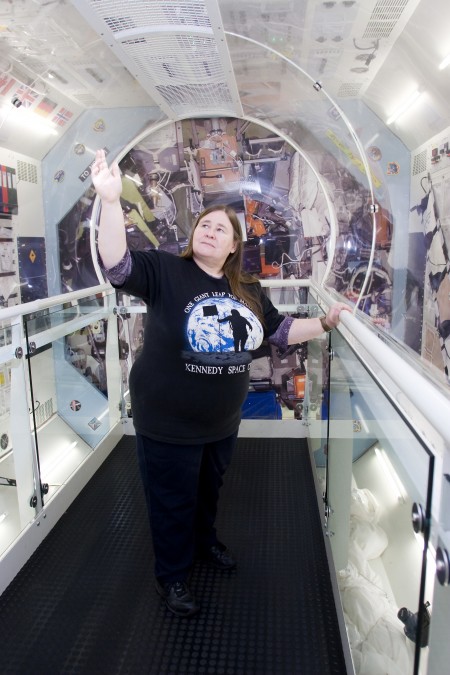
Kerrie’s Medal (OAM) of the Order of Australia in the General Division of the 2020 Australia Day honours list was given for her service to astronautical history as a curator:
- Independent space historian, curator and writer (current)
Museum of Applied Arts and Sciences (Powerhouse Museum) Sydney
- Curator, Space Technology, 1983-2014
International Academy of Astronautics
- Co-Chair, History of Astronautics Committee (current)
- Member, Space Museums and Science Centre Committee (current)
- Member of the Academy, elected 2012.
- Editor, several volumes of ‘History of Rocketry and Astronautics’ (proceedings of the Academy’s annual symposium on the history of astronautics), International Astronautical Federation
- Member, Education and Outreach Committee (current)
Other service includes:
- Lecturer, Department of Space Humanities, International Space University, since 2001
- Member, National Space Society of Australia and Space Association of Australia (current)
- Most recent exhibition – From the Outback to Outer Space: Woomera1955-1980, National Archives of Australia and State Library of South Australia, 2017.
- Author, Australia in Space, 2017 and Space Australia, 1993.
Past awards and recognition also include:
- Recipient, Sacknoff Award for Space History, 2015
- Recipient, Australian Space Pioneer Award, National Space Society of Australia.
Meeting Yaz – Interview with Mandip Gill
The latest season of Doctor Who has just ended, leaving much for fans to debate in its wake. There was a new Master, Gallifrey’s destruction (again) and the revelation that the Doctor has forgotten multiple lives, all lived before the First Doctor and his granddaughter ever even thought to go see the universe. One of the major players in this season was of course Yasmin Khan, played by Mandip Gill, so while we reel from the end of the series, the DWCA has presented here the interview with her that first ran back in Data Extract 241.
Thanks to interviewer Kevin Suarez from 2SER for conducting the interview.

Was working on Doctor Who how you imagined it?
Before I got the audition, I didn’t imagine it. I didn’t know what it would be like, I thought it was worlds away from anything I would be able to do or be in. And when I got it, I was like “I actually don’t know, you can’t expect anything because it’s so random!” And it turned out to be really random and it turned out to be better than I expected. It turned out I made friends for life. I found this new series that I absolutely loved – I’ve been taught so many things while doing this series about history and about space and time and it’s just been mind-blowing.
What I love is, when we’re on set doing something, it often turns out that it looks very different when it finally gets to screen. So for the nine-month process I really enjoyed myself, but I still have now 10 episodes to enjoy with you guys because I have no idea what they look like!
Often when you do other shows, you basically know what it’ll look like, because its drama and nothing’s added. But with all the visual effects and the sound and the grading and the monsters added, it’s completely different. Now I get double the time to enjoy it.
When it comes to your character of Yaz, or Yasmin Khan, what did you want to bring to the character?
It was already written, but there was this sense of truth when we went in to the audition. There’s a lot of truth this series, a lot of drama, real connections and relationships and I just wanted to embed that into my character. I wanted her to be a three-dimensional character with lots of faces and genuine emotions. I didn’t want her to be always scared of a monster or always be upset in certain situations, I wanted to find a natural angle.
So I’d think, “we’ve been on the TARDIS for x amount of time, how would she react to this particular monster?” Then how is that different to when she first sees her very first monster or the first time she going into a spacecraft? I just wanted it to be very truthful, wholesome, and real so that every week, people were finding a new little bit of Yaz, and can go “she’s real! I can connect with her because this week she’s upset but that might not have upset her last week!” She’s been on the TARDIS a little bit longer, she’s missing her family and that really does upset her.
Team TARDIS met Rosa Parks, with an amazing exploration of the Civil Rights Movement and racism, both in the past and present. Will we see the Doctor delve into more contemporary political issues such as racism and misogyny?
Yeah, you will do. Obviously I can’t say too much but there is a few more episodes where that is touched upon, and like Rosa, there are historical episodes that touch upon issues that are still prevalent now.
On a similar note, how has it been representing British – Indians on the show?
To clarify, I’m Indian and the character I play is Pakistani. Just representing an Asian person that isn’t a stereotype, and is a three-dimensional character, an ordinary person in extraordinary circumstances and is relatable, it’s really important to me. I’m glad I’ve had the chance to do it with such an amazing team of writers, working with people and directors of colour.
I’m very fortunate that I’m in a place where there is a shift in what is being created, also a shift in the stereotype of Asian people. We have amazing stories on Doctor Who, and a lot of them are not to do with the fact that Yaz is Asian – it just so happens that she is Asian – but she’s also a police officer and a young girl from Sheffield who misses her family but is excited to go on this journey. In one episode, Demons of the Punjab, I think it’s really clever how Chris (Chibnall, executive producer) touches upon her being Asian and we go back and visit Yaz’s history. But then again, not every episode is about how Yaz would react because she’s Asian. She a young girl from Sheffield who has her own issues and her own struggles on this journey. She happens to be brown.
Where (or who) in history would you like to visit (or encounter)?
We get asked this question a lot and it does change because I’ll answer it and I’ll go “I can do better than that. I have a TARDIS and I chose that.” So I’m going to settle on the beginning of time, and we go back and see how it was created and get all the facts. I know what I think – obviously people believe in different religions and sciences, so I’d like to go back and see if it was the Big Bang, see if evolution really happened, and see how we got here.
Everyone’s so hellbent on going “no, I don’t wanna go to hell! I’ll be a good person,” and me being that person, thinking that. Then I go “I don’t know where I came from!”
That’s just as interesting, exciting and scary as where I’m heading, but I know where I’ve come from.
How are the group dynamics both on screen and behind the scenes?
It’s quite similar, the dynamics, in that we absolutely get along. We’re so lucky that there was chemistry there from the offset – there was no need for us to go to dinner, or work together for a few weeks and warm to each other. We literally get on so well. We found the dynamic with our personal relationships and there’s a different dynamic in the TARDIS. For instance, Brad(ley Walsh)’s character Graham is very serious, doesn’t want to go along with it, very apprehensive, but Brad in real life would throw himself down the stairs just to make you laugh. (laughs)
We’ve seen a bit of Ryan and Graham’s family life so will we be seeing insight into Yaz’s family life?
Yeah, definitely. We visit Yaz’s history in Episode 6 (Demons of the Punjab). We meet her mum in the next episode (Arachnids in the UK) and she’s played by Shobna Gulati. So we do touch upon it just as we have touched upon Ryan’s history. I think that it’s just that everyone’s said to me that we haven’t see much about Yaz but Chris has done this natural journey You have time to breathe and we go on a journey with each character, rather than a bombardment of everybody’s story at the beginning. If it were like that, and we were forced to like these characters. It would be overwhelming. I just love the way that it’s naturally breathing, so that people feel like they know Ryan who’s developed over the last couple of episodes, and he’ll continue to develop. I was marinating in that mix, and then we go see my family and then we touch on Graham’s personal life.
It was really nicely done and it allows everyone to invest in each character and see who they like or who they may not like and that’s fine.

Doctor Who Brand Manager Edward Russell at Sydney Day Event 1 March
You may never have heard the name Edward Russell before, but you can be sure there aren’t many people who have had as much to do with post-2005 Doctor Who behind the scenes than him! Working as Brand Manager for the show from 2006 to the end of 2017, he worked on the BBC Proms, the Symphonic Spectaculars, oversaw the range of Doctor Who books, arranged photography on the show and (of course) dealt directly with the many talented people who brought the show to life.

When a guest was needed for the Christmas Special it was Edward Russell who found a way to get Kylie Minogue on board the Voyage of the Damned. When Matt Smith arrived in the role as the Eleventh Doctor it was Edward Russell that went on a bus tour with him, visiting schoolchildren across the UK. He went to multiple events, hung out with David Tennant, Lis Sladen, Peter Capaldi, Karen Gillan, Freema Agyeman (and many others), worked with writers and artists and photographers and was there on the set during the filming of some of the most iconic moments in Doctor Who history.
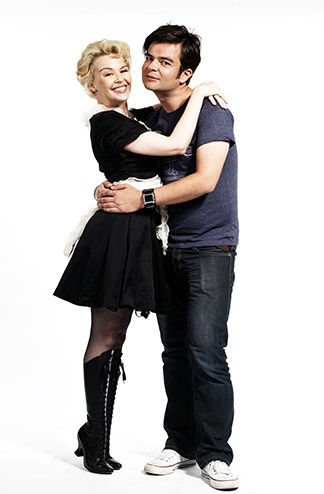
“There is almost nothing which had the Doctor Who name on it between 2006 and 2017 which I wasn’t involved in to some degree,” Edward Russell himself has stated. A wealth of behind the scenes stories, he has agreed to share them all with Australian Doctor Who fans at a one day only event on Sunday 1 March at Club Ashfield in Sydney, NSW.
Located at 1-11 Charlotte Street Ashfield, right next to Ashfield Railway Station, this friendly club promises to host a very unique Doctor Who event. The club also has an Italian Bistro and an award winning café serving wood fired sourdough sandwiches, salads, burgers and desserts. So come along for the day and meet the man behind the Doctor! The event will run from 10 am to 5 pm – make sure you don’t miss out!
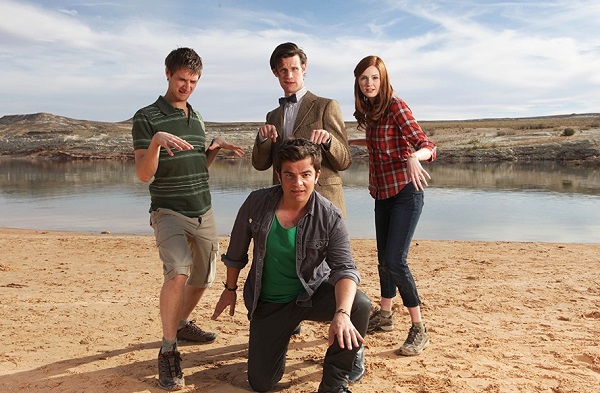
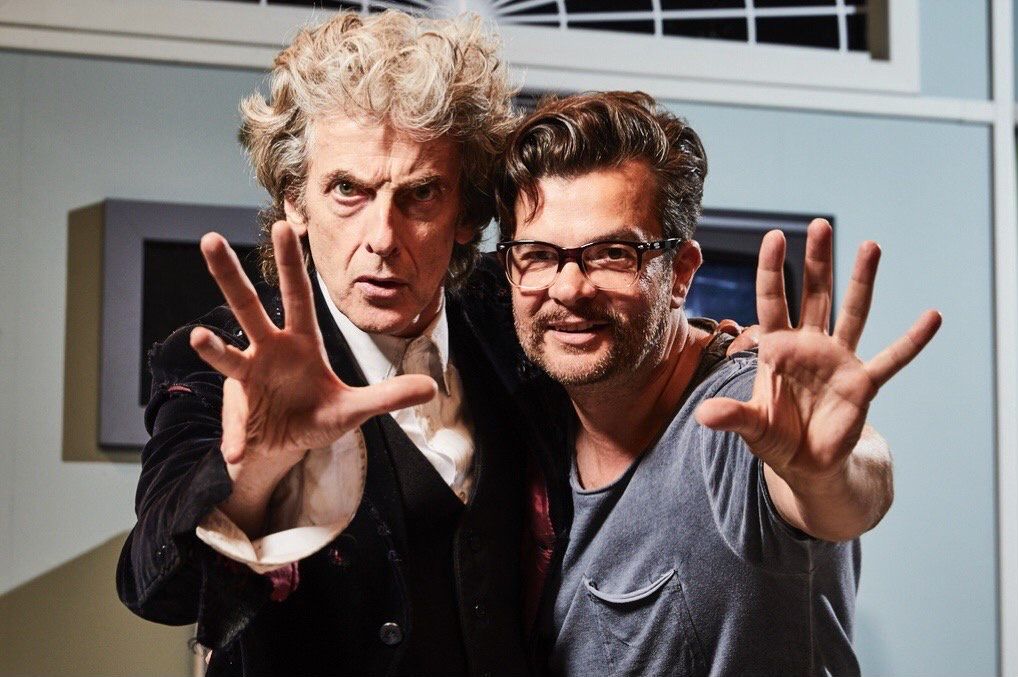
Hartnell and Troughton Blu-ray Releases Confirmed
In recent interviews with Doctor Who Magazine the key players behind the Doctor Who classic series Blu-ray box sets confirmed that they were actively working on Hartnell and Troughton seasons for future release. Although they wouldn’t go so far as to confirm where the 1960s seasons might fall in the release schedule, they did mention some of the challenges they were currently tackling to bring those releases to fruition.
“Obviously, we’ve got some tricky things still coming up,” stated Russell Minton, Head of International Production Consultancy at BBC Studios and executive producer of the Doctor Who Blu-ray box sets. “Seasons from the 1960s of 40-odd episodes, with gaps we somehow have to fill. We won’t rush things; we won’t release anything until it’s the best it can be.”
Pete McTighe, content consultant on the Blu-ray box sets, confirmed there is a list they are working to, covering all seasons of the classic series of Doctor Who. “It’s really just a list of potential content for each of the 26 seasons, and the rough sequence of release. It was a lot of work to break down all of that, moving things around until they were in the right places. Now we have that information, once a season is confirmed for release we generally know what old content we have for it and then Russell Minton will decide what new stuff goes on there.”
Previously fans looking at the list of missing episodes had hypothesized that Season Two might be the first classic series to see release as a Blu-ray box set, reasoning that there were only two episodes missing from that whole season. Surely it would be easy to create animated reconstructions of The Crusade episodes 2 and 4 and have it prepped for release in no time? Alas, animation director Charles Norton pointed out it is slightly more complicated than that. “There are certain stories that are perhaps more doable than others. The Crusade is an interesting one, because it’s one we’re missing two episodes from. So you look at it and think, ‘Two episodes? 45 minutes? We’ve just done two and a half hours – 45 minutes would be easy!’ Then you actually look at The Crusade, as I did a few days ago, and you realise that there are 24 speaking characters and they all have multiple changes of clothes. There’s lots of different costumes and sets. But I’m not saying it’s impossible. Nothing’s impossible.”
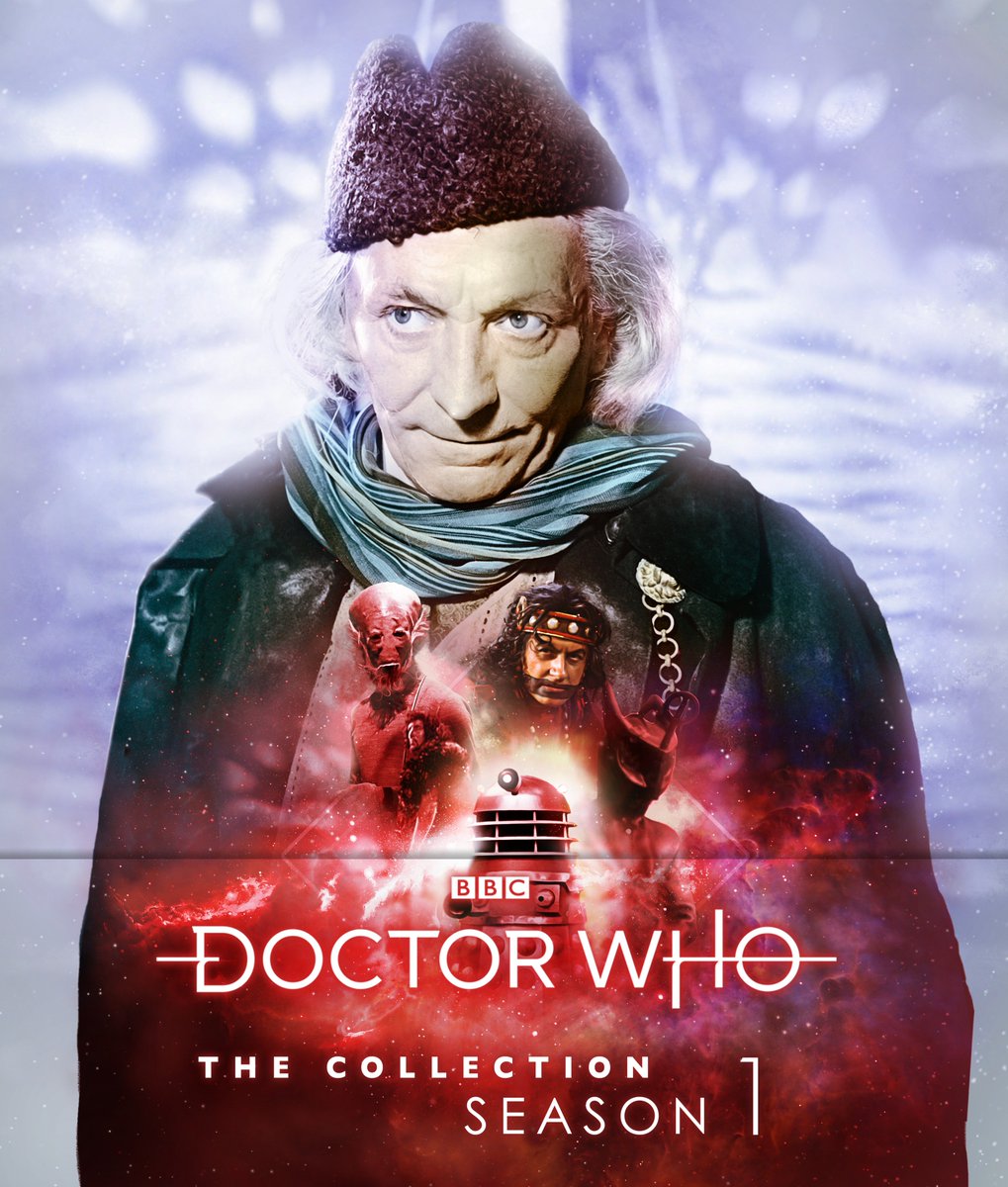
Blu-ray special features director Chris Chapman did confirm however that the team is currently working on new material for future Blu-ray box sets of the 1960s seasons, commenting that the new features are “all about relationships, how these people are with one another. The stuff we’re working on for next year takes that to heart. Can we put these familiar faces in unusual situations where they provoke unexpected reactions from each other? It means we’re creating something new, not repeating the same behind-the-scenes stories.” And it would seem that Season Five is the box set they’ve been creating material for most recently. “They’ve announced the animation of Fury from the Deep for 2020,” Chapman noted. “On that, we went out to sea, flew drones above the enormous Red Sands sea fort and had people climb up it!”
Season Five, of course, still has some gaps to be filled. Stories Tomb of the Cybermen and Enemy of the World are complete, while The Ice Warriors has already had its missing episodes animated. That still leaves five episodes from The Abominable Snowmen, one episode from Web of Fear and four episodes from Wheel in Space to fill, after the promised animation of Fury from the Deep is complete. Tantalisingly though, episode one of Wheel in Space has already been partially animated, with that footage released as an extra on the Blu-ray of the animated reconstruction of Season Four story The Macra Terror. Even more tantalising is the fact that missing episode hunter and director of the Television International Enterprises Archive, Philip Morris, did actually find Web of Fear episode three in a relay station in Nigeria, only to have it go missing again during the six month negotiation period to try and have it returned to the BBC. Regarding the eternal question of whether further missing episodes have been found, Morris has always stayed cautiously silent. “Fans will just want a yes or no, haven’t you or have you. But its complex. All I can say is the wind is blowing the right way, be patient. There are no announcements in the pipeline at present. It can sometimes be the wrong thing with ongoing work and investigation. An example would be during the last announcement I was in a very hostile part of the world and suddenly I was everywhere on TV. My anonymity was compromised. Which made the team a target. So we must plan these things carefully for the greater good of the project and the safety of the personnel involved.”
While no dates are set or seasons confirmed for the Hartnell and Troughton Blu-ray box sets, new animated reconstructions are on the horizon and it has been officially confirmed that the full season Blu-ray box sets are in the works – actively being produced right now! Which is surely something for all fans of Classic Who to celebrate and look forward to!
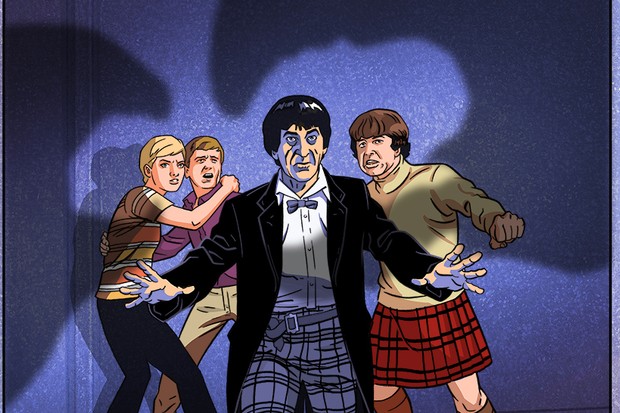
Data Extract 245 Out Now!
The late running Data Extract #245 is out now from DWCA Publications! Originally scheduled for late December 2019, the issue will instead hit post boxes in late January 2020, but promises to have been worth the wait. It features an interview with Mark Sheppard on his role as Canton Everett Delaware III, as well as an interview with Josh Snares on the part he played in the University of Central Lancashire’s remake of Mission to the Unknown. Plus new theories from The Boffin, cosplay adventures caught by the camera of Norman Keshan, news, merchandise and reviews.
It also features the final episode in the Eleanor saga, the fan fiction strand that has been running in Data Extract since issue 228. The siege of Atlantis is underway and only the Eleventh Doctor and Eleanor Chaplette can defeat the shadows – everything depends on them, but can their bond survive the descending darkness and the end of all things? Data Extract is a magazine exclusive to members of the Doctor Who Club of Australia, so if you want a copy make sure your membership is up to date!
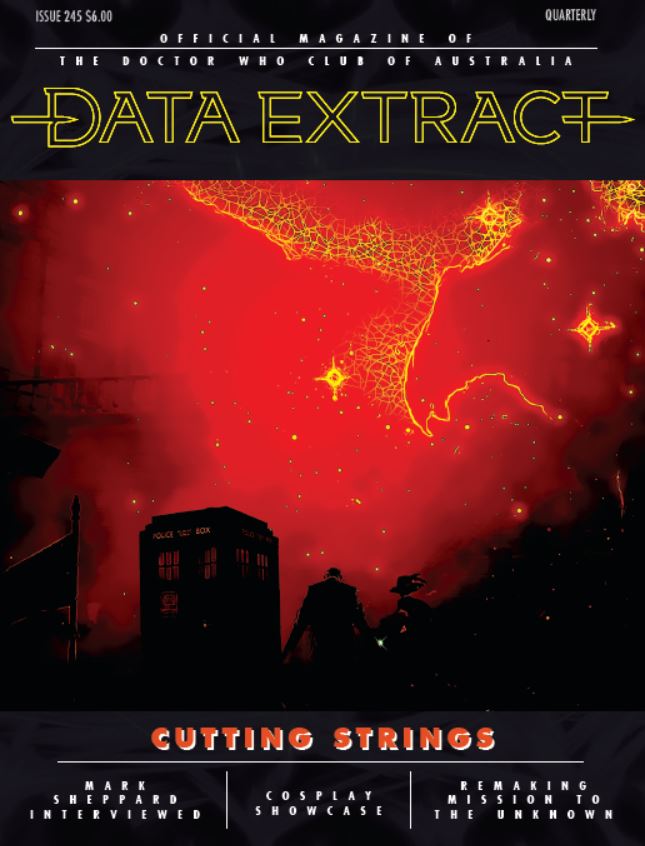
Zerinza Volume Three out now!
The third volume of Doctor Who fan publication Zerinza is available now as a print on demand book in both paperback and hardcover through the club’s DWCA Publications page on Lulu. It was already provided as a digital download to all DWCA members earlier this month. The publication contains all new interviews with K9 creator Bob Baker, non-fiction writer Robert Smith?, fiction writer Jon Blum and fan creators Dallas Jones and Roger Reynolds, plus (thanks to Antony Howe) interviews from the archives with Verity Lambert and Katy Manning. Also, the history of early fandom in Brisbane and a look at Bob Baker’s 1980’s opus Into the Labyrinth, a time travel show that included scripts from Who luminaries Robert Holmes, John Lucarotti and Anthony Read. To check it all out go to the DWCA Publications page.
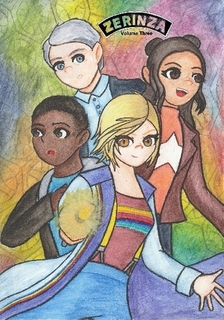
Doctor Who Classics go digital
The digital video subscription service BritBox, which currently serves the United Kingdom, United States and Canada, has added classic Doctor Who material to its streaming repertoire as of Boxing Day 2019. The service, which streams British television series and films from the BBC, ITV, Channel 4 and Channel 5, has added 627 pieces of Doctor Who Classic era content, made up of episodes, spin-offs and documentaries. Most notably for Doctor Who fans, this includes both animated reconstructions and telesnap reconstructions of missing episodes. The Tenth Planet, The Moonbase, The Ice Warriors and The Invasion were all added, featuring the surviving episodes with the animated reconstructions previously released on DVD. The most recent version of Shada, completed with animated segments for the unfilmed portions of the story, was added as one 130 minute special. The fully animated reconstructions of The Power Of The Daleks and The Macra Terror were both added, as well as The Underwater Menace, The Wheel in Space and The Web of Fear, which have been completed with telesnap reconstructions of the missing episodes. The surviving episodes of The Crusade, Galaxy 4, The Space Pirates and The Celestial Toymaker were also added, but without any reconstructions for the missing parts.
Since the launch of BritBox as a Netflix-style streaming service in March 2016, it has continued to grow in both reach and content. The addition of Doctor Who, with the range of material added thus far covering the first eight Doctors, is a major step towards creating one consistent digital platform that can house all aspects of the show’s long history. Commenting on the launch Reemah Sakaan, Group Director of ITV SVOD, stated: “We are looking forward to expanding the collection even further by working with the show creators to lovingly restore lost and previously unavailable episodes in the months to come and offering a truly exclusive experience”. All of which bodes well for further animated reconstructions, finally actively working towards the day when fans can enjoy easy access to every single episode of Doctor Who from start to finish. Although not currently available in Australia, the success of BritBox overseas will hopefully lead to its introduction Down Under in the not too distant future.
Whovians returns to Australian screens in 2020
Doctor Who fans in Australia now have twice as many reasons to rejoice as 2020 dawns – a new season with Jodie Whittaker’s Thirteenth Doctor launches on New Year’s Day, followed soon after on the 9th of January by an all new season of fan show Whovians! Host Rove McManus shared the news with a new video, promising more fun to keep the Doctor Who love rolling for as long as possible.
Since its launch in 2017 Whovians has seen the arrival of Bill Potts, the departure of Peter Capaldi and the advent of the first female Doctor, all with commentary landing firmly on the side of fun and laughter as Rove McManus and his team of “super fans” find new ways to look at a show that truly is bigger on the inside. The show’s head researcher, actor and comedian Patrick Magee, reflected on the show’s humble beginnings, recalling: “We had our first rehearsal, we watched Hell Bent, and we realised that everyone in it was really on board, everyone had a different role to play. So you had Bajo, who was just very strangely excited by weird things; Tegan was really good at getting jokes that would appeal to non-Doctor Who fans, which was really important; Adam was great with his theories and stuff; and Rove was great at keeping them all together. So originally I liked the idea – I thought it would be a fantastic thing for me to do, and I was really excited to be part of it – but I wasn’t sure how well it would go. And then the first episode went out, and it just went gangbusters. We were trending on Twitter, it was great.”
Actor, comedian and panellist Adam Richard shared the joys and horrors of getting to see the latest episodes before anyone else, recalling: “We would get a copy of the episode usually about a week, a week and a half before. That became less and less as we went on. Like, the copy of the final Season 10 episode that we saw had no effects in it. There were just very disgruntled-looking stagehands holding green screens, while Bill the Cyberman is crying over the Doctor’s body and a car goes by in the background. That makes it very hard to get emotionally involved. Also, the music wasn’t finished yet, so they just had music from The Dark Knight. And the final scene, which obviously was from the Christmas special, had only been delivered the day before. So there was a person standing next to a snow machine in the shot.”
The real joy of Whovians though comes from watching a group of friends nerding out over a shared love. As Adam Richard himself remembered of past seasons: “We’d always kind of geeked out. Back then, Rove was way into wrestling. We’d go out to lunch, and we’d be in a food court somewhere, and he would just rip open these wrestling toy packets and start making them fight. He’s always been deeply, deeply nerdy. He doesn’t care about the sanctity of the packaging – he likes to play with the toys, rather than keep them in there. And before this even came up, he’d started listening to the Big Finish audios, which I’m obsessed with. So we’ve always had fairly nerdy conversations about all sorts of stuff.”
Here’s to more geeking out and irreverent commentary on all things Whoniverse related when Whovians returns in 2020!
Rove McManus and his team of super fans are also back, with Whovians, the show that asks the what, where and why of Who.
Posted by ABC COMEDY on Thursday, 5 December 2019



